Bread may not be the healthiest food out
there, but that doesn’t mean it’s not good. In fact, this guilty
pleasure is so delicious, alluring and just so convenient to eat that,
let’s face it, all of us crave a slice or two from time to time. And
while we have written many a time how white bread is not the best choice
for a health-minded nutrition junkie like ourselves, we have hardly
explained which types of bread are a more nutritious and healthier
choice, which is exactly what we intend to do in this article. In
addition, we’ll give you a few tips on how to tell apart a healthy and
high-quality loaf of bread from a less nutritious alternative.
1. Sprouted Grain Bread
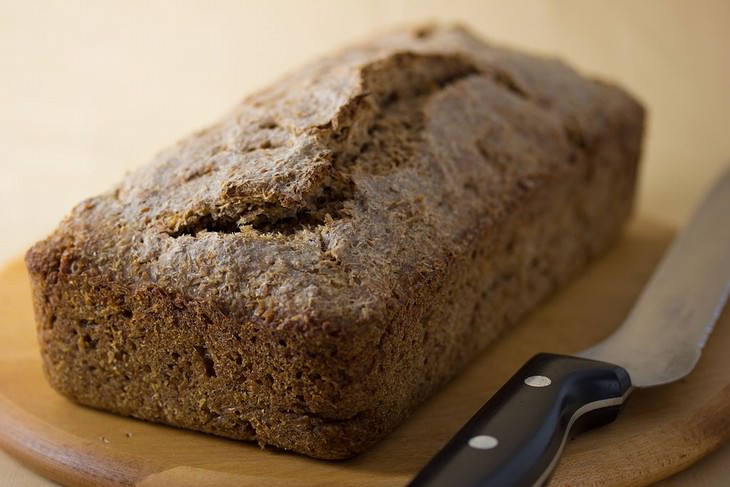
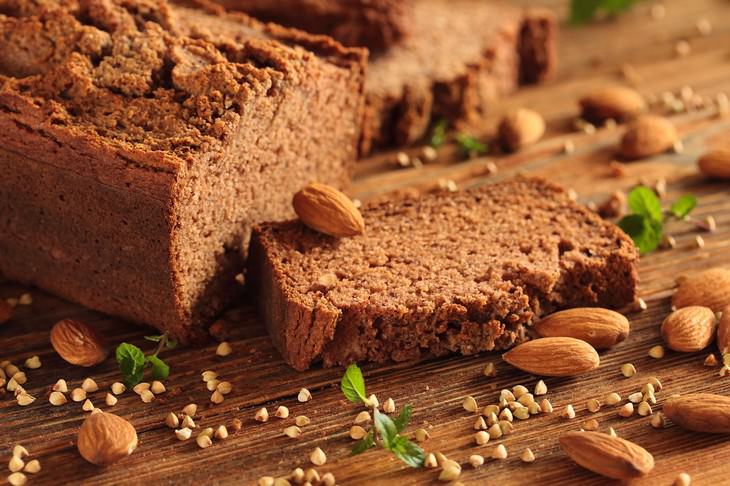
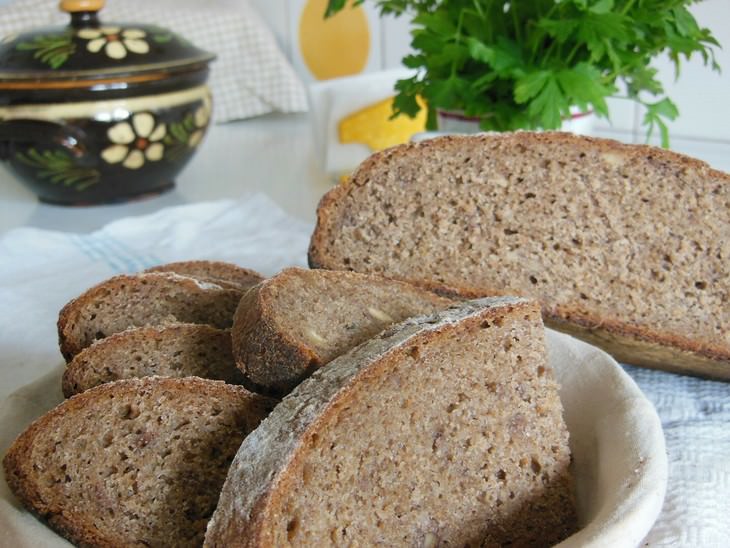

One of the healthiest bread varieties
available is sprouted grain bread. This variety is produced from whole
grains that have been soaked in water and sprouted before milling it
into flour. There is scientific evidence that sprouting is beneficial
for nutrition, as it makes the antioxidants and other nutrients, such as
folate, for example, more abundant and more easily available to absorb
by your body.
Even more importantly, sprouting decreases the carb and starch content
of the grains, which makes it lower on the glycemic index and thus
better for those who have diabetes or are looking for decreasing their
carb intake.
2. Gluten-Free Bread

Now, this is a tricky category, as by far not all gluten-free breads are
healthier than those that contain gluten, but because there are many
people with gluten sensitivity or celiac disease who cannot tolerate
gluten, we felt it’s necessary to add this category.
Technically, any bread that’s made of gluten-free flour can be called
gluten-free, but many of these commercially-sold breads are highly
processed, very high in sugar and contain many unnecessary additives,
making them just as bad for you as white bread. For those of you who
stay away from gluten, search for bread varieties that have no added
sugar and are high in fiber, such as gluten-free bread made of almond or
coconut flour.
3. Sprouted Rye Bread

Rye bread is a kind of bread made fully or in part with rye, a close,
more nutritious, relative of wheat. Compared to wheat, rye has less
carbohydrates and more fiber, which makes for a slower a steadier
digestion and less insulin spikes. In fact, studies found that people
who consumed 100% whole grain rye bread as opposed to wheat bread were
producing much less insulin.
And since sprouting can further increase the levels of fiber and other
nutrients, sprouted rye bread is an excellent choice for those who
suffer from diabetes.
4. Whole Wheat Bread
Yet another ambiguous contestant, whole wheat bread isn’t actually
always 100% whole wheat, as companies try to make their products cheaper
by diluting the whole wheat flour with refined flour, so check the
ingredients to ensure you’re not being fooled and the product doesn’t
contain any extra starches and flours other than whole wheat flour.
If you do find a 100% whole wheat product, though, you can buy it with
confidence, as whole grains, or those grains that haven’t been processed
to strip it from the bran and the germ, have been found to be higher in
vitamins, protein, healthy far and other beneficial plant compounds and
nutrients, as well as fiber. This is why you should always opt for
whole-grain flour-based bread, as it is more nutritious and ultimately,
better for your health.
5. Oat Bread
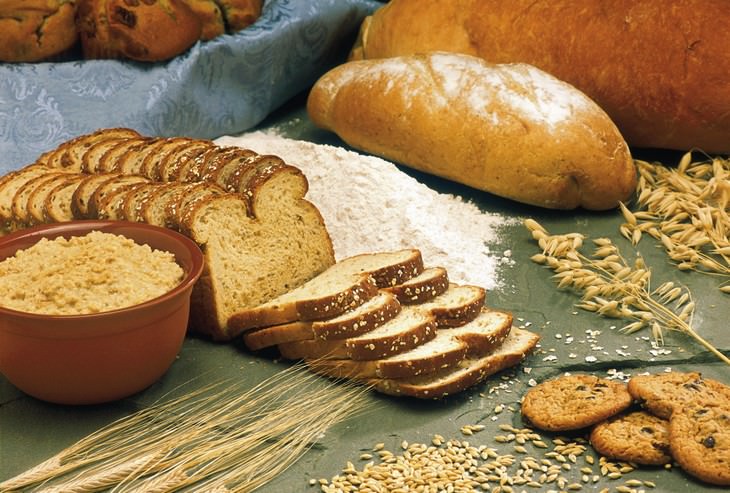
The truth is that oat bread is hardly ever
made of oats alone, otherwise, it would look more like a cookie than
bread. But since oats have a lot of health benefits and a pleasant
texture, they are often added into wheat flour to make oat bread. Oats
are very nutritious, containing magnesium, vitamin B1, iron, zinc, many
other beneficial nutrients, and fiber.
Apart from that, oats contain a compound that has been shown to reduce
bad cholesterol levels and decrease blood pressure called beta-glucan,
so oat bread may be the best bread choice for those who suffer from high
cholesterol and hypertension.
6. Flaxseed Bread
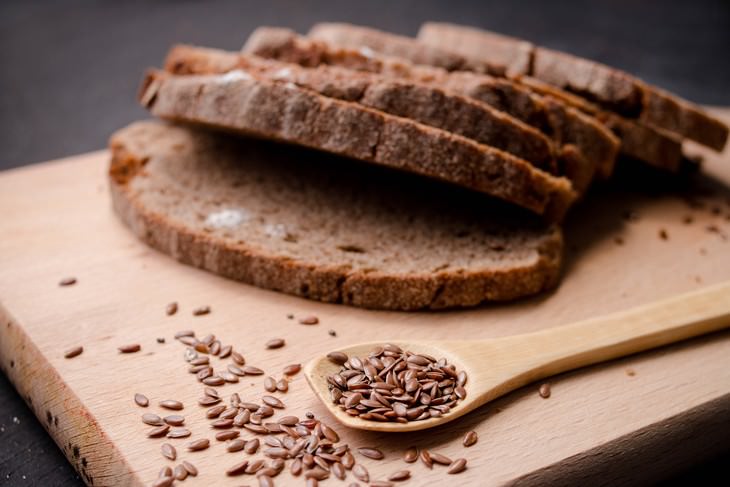

Flaxseeds are kind of amazing, as we
discuss in-depth here, mainly because they were found to have marked
positive effects on lowering one’s risk of developing both heart disease
and certain cancers, but also because they can aid digestion like very
few other foods.
This is thanks to the antioxidants and alpha-linolenic acid that these
seeds contain in bulk. That’s why it is always an excellent idea to add
flaxseeds to your diet, and one of the easiest ways to do it without
having to remember to sprinkle some on a meal is with flax bread.
7. Sourdough Bread
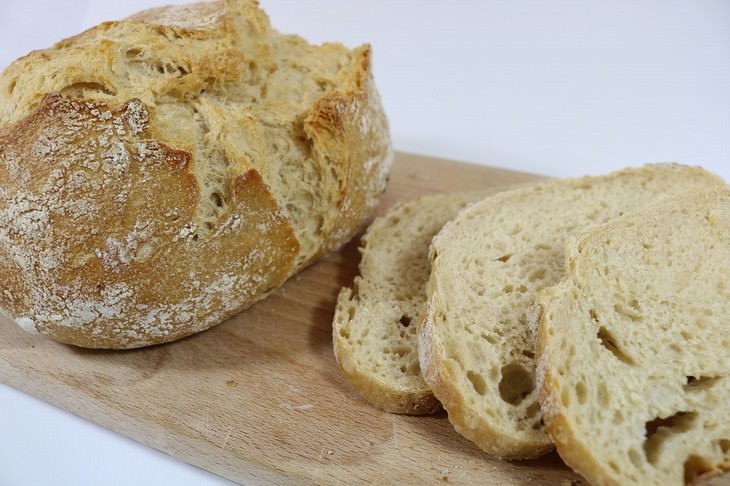

This last type of bread is made by
naturally fermenting the bread dough, be it white-flour based or
whole-grain flour based. In both cases, the fermentation process infuses
the dough with probiotics and prebiotics, which make it easier to
digest and promotes gut health. Apart from that, fermentation lowers the
glycemic index and the amount of phytic acid in the dough.
Phytic acid is a so-called anti-nutrient that prevents beneficial
nutrients from being absorbed by the body, and studies have shown that
fermentation decreases the amount of phytic acid in bread by more than
50%. Of course, we urge you to choose sourdough breads made of whole
grain flours because they are more nutritious than white flour.
How To Buy a Healthier Type of Bread in Store
When it comes to bread, selecting a healthier alternative can be
somewhat tricky because of a huge selection of products and marketing
gimmicks that are meant to confuse you. Of course, the best way to eat
truly superior bread is to make it yourself, as you will control all the
ingredients that went into making it, but we understand that making
bread isn’t easy and, honestly speaking, most of us just don’t have the
time.
To find a superior kind of bread in-store,
follow these simple tips:
1. We know this is kind of obvious, but try to avoid white bread, as it
has the highest glycemic index and often contains a lot of added sugar.
2. Do the texture test: squeeze a loaf of bread with your hands and then
release it. A bread made of highly-processed flour will be too soft and
may not even spring back when you release it. A good loaf of bread
should be firm, dense or spongy. Even if you can squeeze it, it should
return to its original form or even be impossible to compress.
Similarly, when slicing into it, a good bread shouldn’t stick together
or to the knife and should retain its texture.
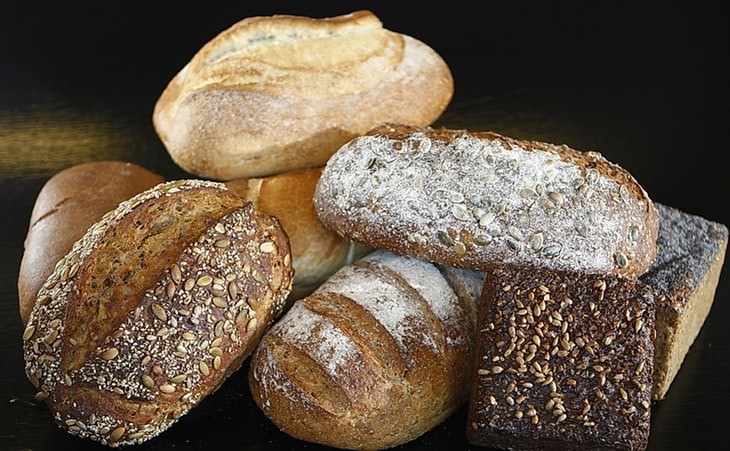

3. Watch out for confusing terms, such as:
Multigrain. This is not synonymous with who grain. For a brand to
label a bread multi grain it’s enough for it to have more than 2 types
of grains, and often, the base of such bread varieties is white flour,
which we’re trying to avoid.
Enriched. This bread variety contains added vitamins and minerals
(like iron or B vitamins) but can be made of any type of flour, and so
it can still be very high on the glycemic list, contain added sugar and
have too little protein and fiber.
Stone ground. While it may imply to you that stone-ground grains are
less processed, they are still not whole grain and are not rich enough
in fiber.
4. Look at the ingredients list:
A more nutritious bread will contain 100% whole grains or sprouted
flours, which will appear at the beginning of the ingredients list.
The ingredient list should be rather short and shouldn’t contain any
added sugar. Don’t know how to spot sugar on the ingredients list? See my next post for spotting sugar in bread.
And finally, look for bread varieties that have 3–5 grams of fiber
and 3–6 grams of protein per slice. Apart from being healthier, bread
rich in fiber will also keep you fuller for a longer time.
Thanks for reading until the very end, we hope you found this article
helpful. Feel free to share it with your friends and family, or simply
go and use your newly-found bread assessment skills in the wild.